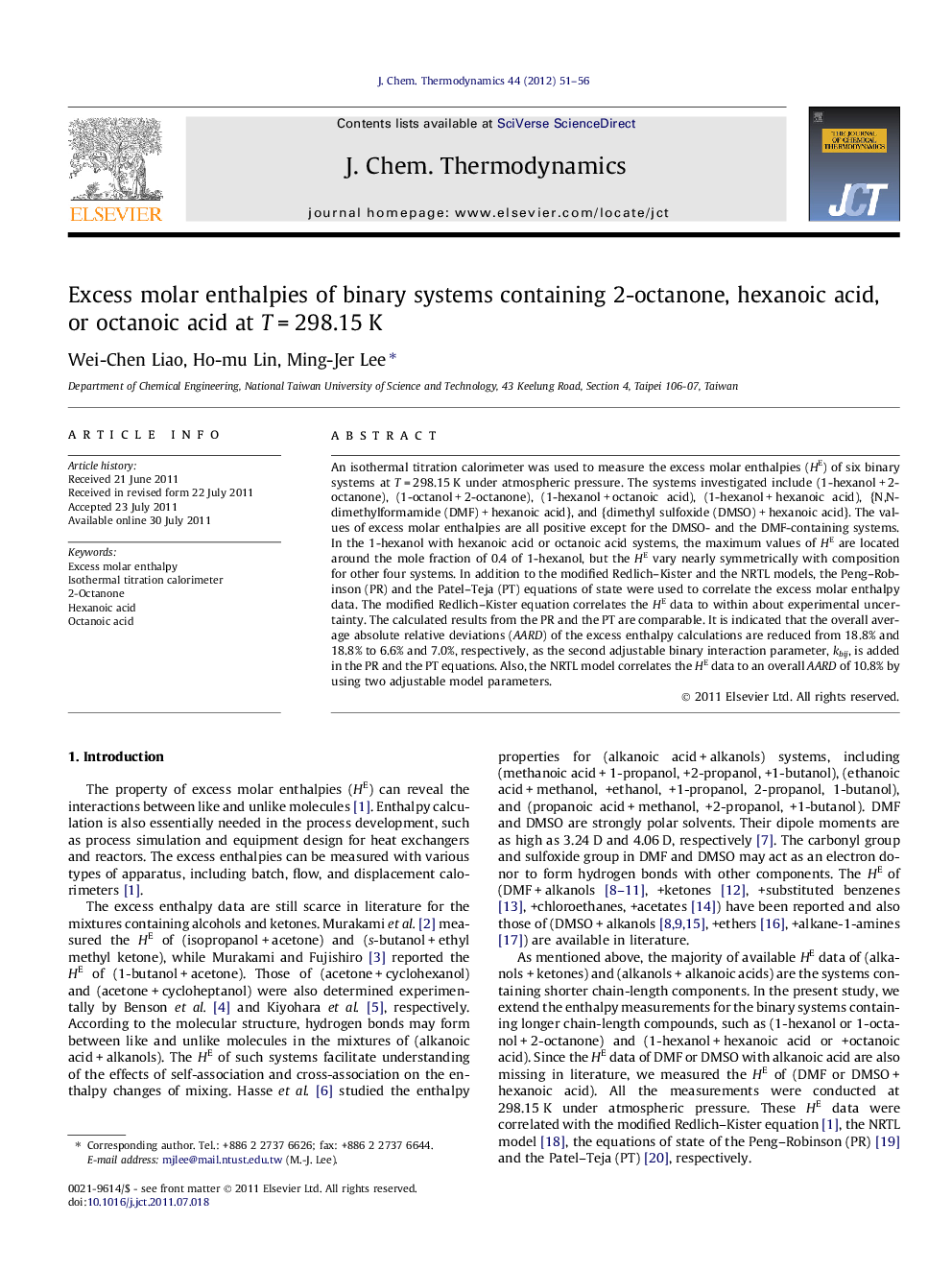| کد مقاله | کد نشریه | سال انتشار | مقاله انگلیسی | نسخه تمام متن |
|---|---|---|---|---|
| 216369 | 1426269 | 2012 | 6 صفحه PDF | دانلود رایگان |

An isothermal titration calorimeter was used to measure the excess molar enthalpies (HE) of six binary systems at T = 298.15 K under atmospheric pressure. The systems investigated include (1-hexanol + 2-octanone), (1-octanol + 2-octanone), (1-hexanol + octanoic acid), (1-hexanol + hexanoic acid), {N,N-dimethylformamide (DMF) + hexanoic acid}, and {dimethyl sulfoxide (DMSO) + hexanoic acid}. The values of excess molar enthalpies are all positive except for the DMSO- and the DMF-containing systems. In the 1-hexanol with hexanoic acid or octanoic acid systems, the maximum values of HE are located around the mole fraction of 0.4 of 1-hexanol, but the HE vary nearly symmetrically with composition for other four systems. In addition to the modified Redlich–Kister and the NRTL models, the Peng–Robinson (PR) and the Patel–Teja (PT) equations of state were used to correlate the excess molar enthalpy data. The modified Redlich–Kister equation correlates the HE data to within about experimental uncertainty. The calculated results from the PR and the PT are comparable. It is indicated that the overall average absolute relative deviations (AARD) of the excess enthalpy calculations are reduced from 18.8% and 18.8% to 6.6% and 7.0%, respectively, as the second adjustable binary interaction parameter, kbij, is added in the PR and the PT equations. Also, the NRTL model correlates the HE data to an overall AARD of 10.8% by using two adjustable model parameters.
► An isothermal titration calorimeter was used for enthalpy data measurement.
► The investigated binary systems contain 2-octanone, hexanoic acid, or octanoic acid.
► The excess enthalpies are all positive except for mixtures containing DMSO and DMF.
► The Peng–Robinson equation with two parameters yielded the best representation.
Journal: The Journal of Chemical Thermodynamics - Volume 44, Issue 1, January 2012, Pages 51–56